Meredith Allard's Blog, page 12
November 30, 2021
My Favorite Christmas at Hembry Castle Posts (And Happy Holidays!)

I’m going to be taking December off in order to focus on the final stretch of finishing The Duchess of Idaho. Whenever I’m deep in writing mode, as I am now with DOI, it’s hard to participate in real life because my head is so firmly caught in the world of whatever story I’m telling. Reality can really get in the way when I’m writing a novel. Luckily, it’s the holiday season so I’ll have a lot of time to concentrate on the Wentworths!
I wanted to finish 2021 by sharing some of my favorite Christmas at Hembry Castle posts from last year. My personal favorite is the one about the recipes from Mrs. Beeton. I’ve tried the Syllabub and it’s delicious, so if you’re looking to have some authentic Victorian flavors at your holiday table, give one of those recipes a try.
If you’re looking for some lighthearted holiday reading set in a Victorian country house a la Downton Abbey, I hope you’ll enjoy Christmas at Hembry Castle. It’s on sale for 99 cents through 12/31/21.
It’s Hanukkah this week, so I’m busy cooking. I wish you the happiest of holiday seasons and a wonderful new year. I for one am making some changes in the coming year, and I hope that 2022 is whatever you wish it to be.
See you in January!
Christmas at Hembry Castle is on a Virtual Book Tour!
Mrs. Beeton’s Recipes for a Perfectly Proper Christmas
Victorian Christmas Tradition s
An Excerpt: Christmas at Hembry Castle
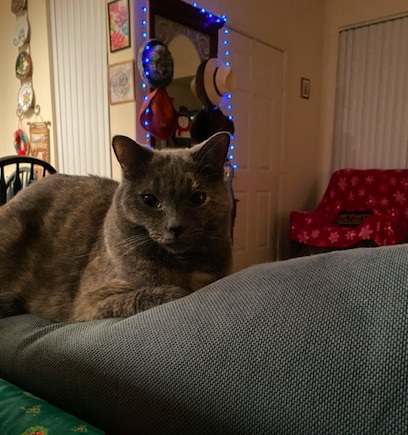 Whether you celebrate Christmas or Hannukah (or both like we do), Poppy sends you happy holiday wishes.
Whether you celebrate Christmas or Hannukah (or both like we do), Poppy sends you happy holiday wishes.
November 22, 2021
FAQ—The Duchess of Idaho Edition

I’ve been promising this FAQ to my newsletter friends for a couple of months now, so let’s do this!
1. Are James and Sarah in the new book?
Of course! What would a Loving Husband story be without James and Sarah? The main focus this time, though, is on Grace, their daughter. No one familiar with the Wentworths’ story would be surprised that Grace is touched by a magic all her own.
2. Which of my other favorite Loving Husband friends are there?
Olivia, everyone’s favorite motherly witch, takes center stage (as she usually does—good old Olivia). Some other favorites are not in DOI, such as Jennifer, Chandresh, Timothy, John, and Geoffrey, but never fear. They’ll make appearances in upcoming Loving Husband books. We’ll meet some new friends too, including Annabelle Emerson Alexander—Sarah’s mother. Trust me, she’s not anything like you would expect Sarah’s mother to be. There’s also a new cast of characters in those who travel the Oregon Trail.
3. What is the correct order to read the first four books?
If it were up to me, I’d suggest reading the books in this order:
Her Dear & Loving HusbandHer Loving Husband’s CurseHer Loving Husband’s ReturnDown Salem WayHaving said this, many readers start with Down Salem Way, then read the other three, and they are perfectly happy doing so. Down Salem Way is the prequel to Her Dear & Loving Husband, but Down Salem Way was written as a stand-alone. I do think you’ll get more out of it if you read HDLH and DSW together. But many readers loved Down Salem Way and that prompted them to read the other books in the series. Of course, there have been readers who started with Down Salem Way and thought they should have started with HDLH, but I think that’s more because they saw that DSW wasn’t Book One and some readers simply prefer to start a series with Book One.
Keep in mind that this list doesn’t include the three books in the Grace Trilogy, as I call it, with The Duchess of Idaho being the first book of the new trilogy, and the two upcoming novellas. I’ll share another reading order after those are released.
4. Did you know that The Duchess of Idaho is the name of a movie?
As a matter of fact, I did. The film is called Duchess of Idaho. I added the The to differentiate the novel slightly from the movie. Not only did I know about the film, but that’s where the title came from. I’ll have more to say about where the title when it’s closer to the release of DOI.
5. Did you know that Idaho wasn’t a state during the time of the Oregon Trail?
This is why I love my readers. Not only are they super nice, but they’re also super smart! Yes, I do know that Idaho didn’t become a state until 1890. As a matter of fact, I lived in Boise, Idaho for a year between 2002 and 2003. The novel takes place on the Oregon Trail in 1850. At that time, the state we know today as Idaho was part of the Oregon Territory. Those of you who are LH readers know that it’s hard to talk about any of the books without giving too much away. Spoilers! All I can say for now is that the title will make sense when you read it.
6. When will The Duchess of Idaho be released?
Gosh, if I had a dollar for every time I was asked this question! I mean that in the very best of ways because I’m so happy that readers are excited about the new book.
If you’ve been following me for any amount of time, you know that I’m terrible at guessing when books will be finished. Over the years, I’ve learned to accept that books take as long as they take regardless of when I think they should be done. I had hoped to have DOI out Autumn 2021 (which is now) but obviously that didn’t happen.
I’m cautiously optimistic that a late February/early March 2022 release is in the cards for DOI. There will be a second Loving Husband story, a novella, out later in 2022. That I feel confident saying, but then again the muses may have other ideas. I’ll have more to say about the novella after DOI is published.
7. Is The Duchess of Idaho like the Loving Husband Trilogy with past and present storylines?
Yes! There is a past and present storyline in DOI, just like the first three James and Sarah books. This time, as I mentioned earlier, the past storyline revolves around the Oregon Trail.
8. Are you mentioning COVID in the present storyline?
One lovely reader in Michigan asked me this last month. My answer is no. I read and write fiction to escape reality, so to write about the current pandemic would place me more firmly in reality than I care to be at the moment. I know that some writers are using COVID storylines in their books, and that is a perfectly legitimate choice. I made the decision to continue with the Loving Husband universe as the fantasy world that it has always been.
9. How many books will there be in total in the series?
This is a great question that I don’t actually have an answer to. There is the original trilogy, Down Salem Way, and the three Grace books—so far that’s seven. There are two definite novellas on the horizon.
Longtime Loving Husband fans know that I only intended for the series to be a trilogy. I was so certain the story was done after Her Loving Husband’s Return. Fans had other ideas. I kept writing more James and Sarah stories because readers wanted them. Lately, I’ve found a few angles that will allow me to continue the story in ways I had never imagined when I first published Her Dear & Loving Husband. Some of those angles were directly inspired by readers. So thank you!
I love hearing from readers, and I love answering reader questions. If you have a question that isn’t addressed above, you can use the Contact form at the top of this page. Your question may appear in a future edition of Frequently Asked Questions!
To my American friends, Happy Thanksgiving. I’m thankful for all of my wonderful readers from all over the world who have supported James, Sarah, Grace, Olivia, and me over the past decade.
November 8, 2021
Down Salem Way Wins the B.R.A.G. Medallion
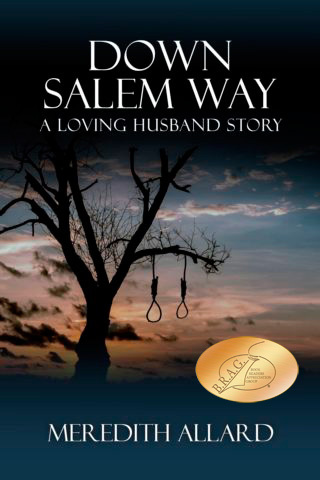
In some exciting Wentworth-related news, Down Salem Way, a novel of the Salem Witch Trials, has won the B.R.A.G. Medallion.
I’m so glad that readers have connected to the story of how James and Elizabeth Wentworth fell in love. I knew I was taking a chance with writing the prequel to the Loving Husband Trilogy in a completely different style than the first three books, but I’m never one to shy away from a challenge so I went with it.
The first three books in the Loving Husband Series are written from third-person point of through either James or Sarah’s eyes. Also, the first three books have dual timelines in the past and the present. Down Salem Way is strictly historical fiction since it only has one timeline during the Salem Witch Trials in 1692. It’s also told in first-person by James.
I had intended to write Down Salem Way in the same style as the first three books. I wrote a couple of drafts of the story with the dual timeline but it just wasn’t working. Once I realized that James needed to share his thoughts as the madness of the witch hunts spins out of control around him, I decided that this would be his diary from that time. I’m so glad James had his chance to share his side of the story. For Loving Husband Series fans, the eternal love between James and his wife makes more sense with this back story. We understand now why their love spans time.
If you haven’t read the other Loving Husband books but you’d like to read Down Salem Way, go right ahead. Even though Down Salem Way is the prequel to Her Dear & Loving Husband, I wrote it as a stand-alone so you don’t need to read the other books to understand it. Readers have told me that they hadn’t read any of the other books in the series before they started with Down Salem Way and they had no trouble following the story. It makes my heart sing when a reader tells me that they read Down Salem Way and now they want to read the other three books.
In fact, the only book in the Loving Husband Series that doesn’t work as a stand-alone is Her Loving Husband’s Curse. I do think you need to read Her Dear & Loving Husband first to get the most out of that story.
The Duchess of Idaho, Book Five of the Loving Husband Series, is also being written as a stand-alone, so if you’re interested in the Oregon Trail with a little time travel on the side, you can jump right into the story without reading the other books. Of course, if like other readers you decide you’d like to read the rest of the series, you’d make me very happy indeed. I’ve had a few more questions about the publication date for The Duchess of Idaho. No official publication date yet, but early 2022 is a good guess.
Yes, there will be more Loving Husband books after DOI. Grace’s story will be a trilogy, and I have a few other tricks up my sleeve for the Wentworths. I’m so excited to be bringing Grace’s story to life. I think her adventures are just as fascinating as her parents, and I hope readers will think so too.
Thank you to the Book Readers Appreciation Group for adding Down Salem Way to their list of medallion winners. And thank you to the Loving Husband Series fans who have supported James and Sarah through the years.
November 4, 2021
Christmas at Hembry Castle is on a Virtual Book Tour!

With the holiday season upon us, it seemed like a great time to celebrate Christmas at Hembry Castle along with my favorite upstairs/downstairs friends from the Hembry Castle world. I love historical novelist Mary Ressenor’s reaction to Christmas at Hembry Castle: “I laughed out loud at the antics of Edward, Daphne, Frederick, and the others. If you love Dickens’ A Christmas Carol you’re in for a real treat.” I couldn’t have said it better myself.
If you loved the first book in the series, When It Rained at Hembry Castle, you’ll love this Victorian holiday novella. If you haven’t read When It Rained at Hembry Castle, that’s okay too since Christmas at Hembry Castle was written as a stand-alone. You can follow the story just fine without having read the first book.
I wrote Christmas at Hembry Castle last year when we were all in need of some lighthearted fun and some cheering up. While things are different this year, I think we could still use some cheering up. That’s really the reason why I love writing the Hembry books–they make me laugh, and I hope they make you laugh too.
Once again, the book tour is hosted by the fabulous Coffee Pot Book Club and it runs from November 4 through December 10, 2021. You can see our stops below. I hope you’ll join me on this virtual book tour. I’m looking forward to seeing you!

November 1, 2021
The Challenges of Writing a Time-Travel Story
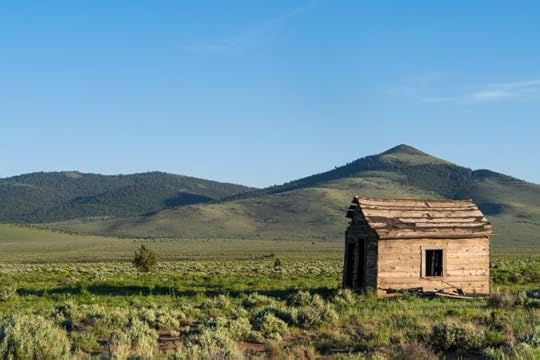 Photo by Dan Meyers on Unsplash
Photo by Dan Meyers on UnsplashI have a tendency to come up with story ideas a lot faster than I write them. I mean a lot faster. Fans of When It Rained at Hembry Castle know that I came up with the idea for that book 20 years before I wrote it. Discovering Downton Abbey helped me finally settle down to write my sweet Victorian romance because the upstairs/downstairs element of the show gave me an angle through which to tell the tale.
I came up with the idea for The Duchess of Idaho nearly 20 years ago as well. I lived in Idaho from 2002-2003, and during my time there I learned about the Lewis and Clark expedition and the Oregon Trail, which conveniently went through what would later (in 1890) become the state of Idaho. I decided in 2003 that I would like to write a novel about the Oregon Trail, even if I wasn’t sure what that story might look like.
I came up with the general premise of the novel a few years after I discovered Outlander through advertisements for the television show. I guess I had been living under a rock because I hadn’t heard of the books until then. I found the idea of writing a time travel story intriguing, but again the story was placed on the back burner while I finished my Ph.D. and a few other books I wanted to write.
I’m not sure when the idea to connect my Oregon Trail tale to the Loving Husband Series first took hold. Grace Wentworth is the daughter of James and Sarah Wentworth, and The Duchess of Idaho is largely her story (never fear—James and Sarah play an important part). The Loving Husband Series is both historical and paranormal, and if vampires and werewolves can walk the earth, why can’t there be time travel too? The Loving Husband world is filled with magic, so the time-travel element fits right in.
I had never considered the specific challenges of writing a time-travel story. Now that the current draft of The Duchess of Idaho is nearly done, I can see that writing such a story isn’t as easy as it appears at first glance. It’s not just that characters go backward or forward in time—they are bringing their sensibilities with them.
I’ve seen time-travel characters—with different beliefs than the society they have traveled to—handled well and not so well. Diana Gabaldon, author of the Outlander series, does a wonderful job handling Claire’s different sensibilities from those she encounters in the 18th century. I’ve read a few time-travel stories where the author ignores the fact that the traveling characters would have a different outlook than those around them. I read one time-travel novel where the author stopped the story to rant about how much better we are today than people in the past.
How do you acknowledge the time-traveling character’s differing views from those around them while keeping your story interesting? How much time and attention do you give to the differences in opinion?
There isn’t one answer to those questions, and authors have to decide for themselves how they’re going to deal with the problems that might arise from an interesting combination of social mores.
The primary purpose of a novel is to entertain. As authors, we need to keep the story moving. So then what is the right amount of acknowledgment of the differences between then and now? As with anything else to do with writing, or food, or life, everything in moderation.
I don’t want to spend too much story time focused on how my time-traveling character has different opinions because I want readers to feel as though they’ve traveled back in time. Readers don’t need constant reminders of the differences between then and now because they are reading now. They know what our current views are. Yet I’m not comfortable ignoring the differences either. It’s important to acknowledge those differences while keeping the plot moving. Twice, the time-traveling character gets in trouble for views that aren’t the same as the others traveling the Oregon Trail, which makes the differences part of the story. For my fish out of water character, every moment means a decision about the best way to handle their odd situation. The point is to stay alive during a strenuous, dangerous journey across the continent in 1850. The Oregon Trail was hard enough without the added pressure of being from a time two centuries in the future.
One of the challenges of writing historical fiction is allowing characters to act in a way that is truthful to their time. Author Diana Gabaldon said (and I’m paraphrasing here) that historical novelists are afraid to write about the truth of the past because that truth often doesn’t fit with our current way of thinking. But if we’re going to write historical fiction then we must be honest about people during the time we’re writing about.
It’s a lot easier said than done, I know, but if we’re not going to be true to the experience of living at that time, why write historical fiction? Add into the mix a character who thinks differently because they’re from another time and suddenly everything becomes that much more complicated.
It’s a good complicated, though. One of the things I love about writing fiction is being challenged, and writing my first time-travel story is providing a unique set of challenges.
October 9, 2021
An Eye-Catching Cover Design for When It Rained at Hembry Castle
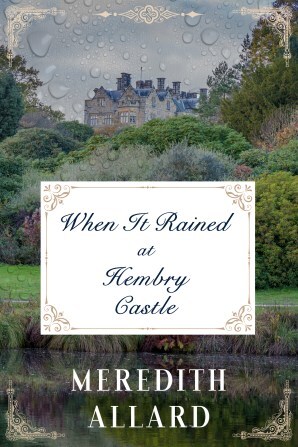
I hope everyone is enjoying their weekend. I just wanted to share a quick update and show off the fabulous new cover for When It Rained at Hembry Castle by the even more fabulous Jenny Q.
Now you can tell at a glance that the two Hembry Castle books are part of the same series. And they’re both on sale at all major online retailers for 99 cents. Check the Booksellers link above to find your favorite bookstore.

October 4, 2021
Daily Life on the Oregon Trail
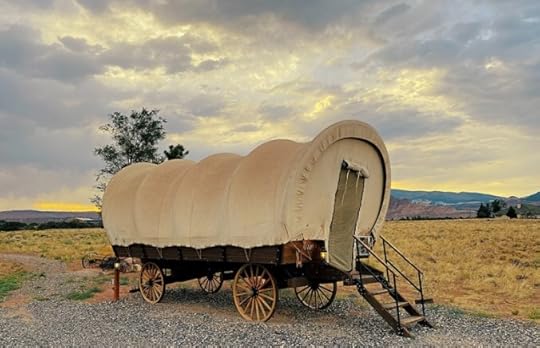 Photo by James Lee on Unsplash
Photo by James Lee on UnsplashOne of the benefits of researching the Oregon Trail is that there are numerous primary sources written by the travelers themselves. Many of the pioneers undertaking the dangerous trail west, primarily women, kept diaries or wrote long letters to family back east. A number of those diaries and letters were later published in newspapers, which helped fuel a westward-looking wanderlust in others.
While there have been romanticized views of what daily life was like for those making their way west, the truth is that conditions on the Oregon Trail, or any of the westward trails such as the Mormon Trail or the California Trail, were harsh.
Often, men drove the wagons while the women and children walked alongside. Contrary to popular belief, Conestoga wagons were not commonly used on the journey. Conestogas were too big and heavy for the rough journey across the continent. Prairie schooners were more compact and better built for such a difficult passage, but they were extremely bumpy inside, which is why many chose to walk.
Some, who were determined to make their way west but didn’t have a wagon, pulled a handcart as they walked. Most days the pioneers traveled 15 to 20 miles. Imagine having to walk 15 miles a day, nearly every day, for six months. No, I can’t imagine it, either. The pace was simply too much for some of the travelers.
One of the more popular stories from this time regards Elizabeth Markham, who stopped by Snake River and announced that she would go no further. At first, her husband continued the journey with their children but then he sent his son back to fetch Elizabeth. When Elizabeth found her way to her family without her son, she announced that she had beaten him to death with a rock. Her husband found the son clinging to life, but while he was gone Elizabeth set fire to one of their wagons. While Elizabeth Markham’s story is one of the more famous stories of such breakdowns, it’s easy to imagine similar scenes occurring throughout the trail’s heyday.
No matter how well any family prepared before heading out, there were so many obstacles along the way that anything could happen, and few made the 2000-mile journey completely unscathed. At various points throughout the six-month journey, there were rushing rivers to cross such as the Missouri River, and while pioneers had several options for crossing, each was dangerous in its own way. Around the 1850s, many of the rivers featured ferries that would carry wagons, animals, and people across, but the ferries cost money and some chose to wade across if the river was low or create their own flatboats with more or less success. People or animals drowning was always a concern, as well as the loss of the wagon or the supplies inside if the wagon toppled. Some families caulked their wagons and floated them across, some more successfully than others.
If the people made it across the rivers all right, there were still concerns with having enough food for the journey. If a family didn’t bring enough food, or if supplies spoiled, or if the men were unsuccessful hunting to supplement their meals, then people would go hungry. Many died of starvation. There was always the threat of illness, and pioneers could die from smallpox, measles, and cholera. Other concerns were severe weather such as thunderstorms, lightning strikes, tornadoes, and hail.
People also had to beware of accidents. Accidents could come from exhaustion, loss of patience or temper, or pure negligence. Sometimes people, suffering in a similar manner as Elizabeth Markham, would shoot themselves or someone nearby. Sometimes guns went off accidentally and injured or killed people or animals. Nearly one in 10 pioneers did not survive the journey.
It wasn’t all doom and gloom, though, and the pioneers managed to keep their spirits up when they stopped to rest for the night with singing and music from those who brought instruments such as banjos, fiddles, flutes, or harmonicas along. Popular songs of the time were “Shoo Fly, Don’t Bother Me,” “She’ll Be Coming Round the Mountain,” and “Turkey in the Straw.”
Children had homemade toys and they played games like bean bag toss and paddleball, both of which are still played today. At night, while the others slept, some women kept a journal, and many, including myself, are grateful they did.
The National Oregon/California Trail Center has a wonderful example of the daily routine travelers followed:
“4:00 am: A bugler blows a trumpet or a rifle is fired by the night guards to wake up the camp.
5:00 am: Cattle are rounded up after being allowed to graze during the night.
5:30 am: Women and children are up and fixing breakfast of usually bacon, corn porridge or “Johnny Cakes” made of flour and water.
6:30 am: Women rinse plates and mugs and stow bedding, while the men haul down tents and load them in the wagons.
7:00 am: After every family has gathered their teams and hitched them to wagons, a trumpeter signals a “Wagons Ho,” to start the wagons down the trail. Average distance covered in a day was usually fifteen miles, but on a good day twenty could be traveled.
7:30 am: Men ride ahead on horses with shovels to clear out a path, if needed
“Nooning Time”: Animals and people stop to eat, drink and rest.
1:00 pm: Back on the trail.
5:00 pm: When a good campsite with ample water and grass is found, pioneers stop to set up camp for the evening. Wagons are formed into a corral.
6:00 pm: Families unpack and make supper.
7:00 pm: Mothers do chores, men smoke and talk, young people dance.
8:00 pm: Camp settles down for the night, guards go out on duty.
Midnight: Night guards are changed.”
It amazes me that these determined people were willing to sacrifice their health, sanity, and their very lives to make their way west where they were sure they would find a better life if only they were brave enough to try.
Sources
9 Things You May Not Know About the Oregon Trail
Life and Death on the Oregon Trail
September 21, 2021
What I’m Reading

I wrote in this post about what I’m doing to rejuvenate and renew my thinking and my priorities.
Another one of my plans for this year includes catching up on my TBR list–that’s To Be Read list in case anyone doesn’t know, although I can’t imagine anyone reading this blog doesn’t have a TBR list that stretches across county lines.
Like most book lovers, I buy books faster than I can read them, which is wonderful because there are always so many wonderful new books coming out. Not too long ago I realized that I had a Kindle full of also-wonderful books that kept getting pushed to the back of the line because I’d buy newer and newer books. I’m sure I’m not the only reader who reads my most recent purchases first since that’s the book that’s foremost in my mind.
Looking over the many amazing books I’ve bought but haven’t read yet, I’ve put a moratorium on my book buying until I can catch up on some of the great books that seemed to stay on my TBR list forever. Of course, I’m still keeping an eye out for interesting books. If something pops up that looks interesting, as one does nearly every day, I’m keeping a wish list so I’ll be ready to go.
I don’t expect the moratorium to last more than a month or two since, like most book addicts, I don’t think I’ll be able to avoid the temptation of a shiny new book for too long. But I’ve already caught up on a few books that have been hanging out on my Kindle for a while, and that’s a good feeling.
Here’s a little of what I’ve been reading lately.
The Gifts of Imperfection by Brene Brown
I adore Brene Brown. I love the work that she does to help us all feel like it’s okay to be human beings and no one can be perfect all the time. I appreciate her point about how it’s better to live an authentic life. That is what I’m striving for, and I always turn to Brene Brown when I need a kick in that direction. In this post I wrote a bit about how life never feels fulfilling when you do what you think you’re supposed to, and that idea came from Brown’s book. This was one of those books I had on my Kindle for a while and I’m glad I finally read it.
I also recently finished Rising Strong, also by Brene Brown, and also a book I had had on my Kindle for a bit. I loved both books. My only suggestion would be to leave some time between Brene Brown’s books since they do tend to focus on the same themes, which is only right since vulnerability is her area of research.
Gilead by Marilynne Robinson
I admit that I put this book down the first time I tried to read it. I remember it was 2019 because I was writing Down Salem Way. I was looking for examples of epistolary novels since Down Salem Way is an epistolary novel. Gilead wasn’t what I was looking for at the time since the pace can be kind of slow. I read a few pages, didn’t find it helpful for writing Down Salem Way, and I slid it back into its slot on my Kindle.
Once I decided to focus on books I already own, I gave Gilead a second chance. I’m so glad I did. I caught everything in my second reading that I missed in the first. Yes, the book is slow going at first, and I wasn’t sure why I should care about the narrator, an elderly minister writing his life story for his young son, but as the narrator’s story came together I could see the magic that won this novel the Pulitzer Prize. If you find the story slow going at first as I did, stick with it. You’ll be glad you did.
Covered Wagon Women by Kenneth L. Holmes
While I’m fitting together the pieces of The Duchess of Idaho (no release date yet, sorry), I’m still doing research on what life was like during and after the Oregon Trail. Covered Wagon Women is a book of primary sources, letters and diaries, written by women both on the trail and after they arrived at their western destinations. This book has been incredibly helpful as I’ve been searching for authentic voices from the era. The Oregon Trail is a good era for primary sources since there are a number of letters and diaries that have survived.
Outlander by Diana Gabaldon
Okay, yes, I’m rereading this book because I want to be ready when the ninth book in the series comes out in November, but the current eight Outlander books are so big that I think it will take me more than two months to read them all. And I’m not even including all the novellas and short stories that go along with the series. I’m also rereading this first book because Outlander is a bit of an inspiration for The Duchess of Idaho since there is a time-travel element to Grace’s story. And that’s all I’m going to say on that subject.
Did I say how much I love autumn reading? With a cup of Earl Grey and maybe a nice biscuit or two. It’s even cooling down here in Las Vegas, and that’s saying something. Of course, I also love summer reading, spring reading, winter reading, any reading. As I’m sure you do too.
Happy reading.
September 8, 2021
Renewal and Rethinking (And Good Food)
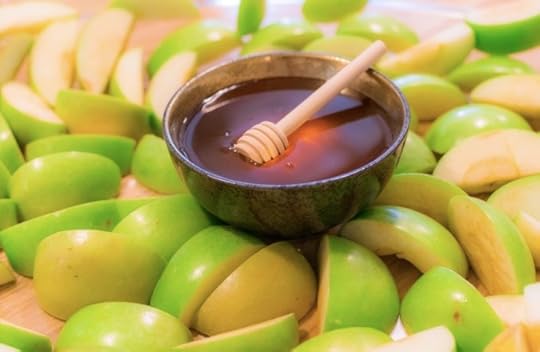 Photo by Igal Ness
Photo by Igal NessHappy New Year to my Jewish friends, and Happy Autumn, my favorite time of year, to everyone. This is a different kind of blog post than I usually write, but since we’re among friends here I thought I’d share a bit about what I’ve been thinking lately.
At sundown on Monday, September 6, 1 Tishrei on the Hebrew calendar, we celebrated Rosh HaShanah (literally “head of the year”), the Jewish New Year of 5782. The year 5782 is also a shmita year, or a sabbatical year, when once every seven years the land should be left to lie fallow. Farming practices such as plowing, planting, pruning, and harvesting are forbidden according to Jewish law while watering, weeding, spraying, and mowing are allowed only as necessary and not in a way to encourage growth. Fruits or herbs which grow on their own may be picked by anyone (Wikipedia—I know, but it was convenient). Shmita is a year-long Shabbat (Sabbath) for the land.
We celebrated Rosh HaShanah quietly at home with a nice dinner of brisket and potatoes and varnishkes and kasha. I’ll share the recipes below. Then I watched the Rosh HaShanah services at a local synagogue online since I’m currently taking care of a family member with health issues. Earlier in the day, I listened to the L.A. Dodgers win, a great start to the New Year as far as I’m concerned.
Since learning that 5782 is a shmita year, I’ve been thinking a lot about the idea of letting things rest and allowing them time to rejuvenate so that the flourishing is even stronger afterward. It’s easy to argue that COVID forced us all into a shmita year of sorts since many of us were home more than we ever had been before. But how much rejuvenation did we find? Most of us were stressed out, working harder than ever, and pushed to our limits for one reason or another.
Many of us are trying to return to some sense of normalcy even as so many problems continue to surround us. As I’m writing this I have the news on (I know I shouldn’t, but you know how it goes) and the graphics flashing across my TV screen reveal high numbers of hospitalizations for children. As a long-time teacher of students ages kindergarten through university, this makes me sad. There is a slight downward trend in new cases, down 4% as I write this, which is a good sign, hopefully.
So what about the shmita year? I’m not a farmer so I don’t have land to let lie fallow. I’m not even much of a gardener these days. I was when I lived in California. I had a beautiful rose garden with lavender and other plants, but since moving to Nevada I can’t find as much as a houseplant that I can keep alive, especially since my house faces north and gets two spots of sun in the late afternoon, which is good when it’s 115 degrees Fahrenheit but not so good when you want to grow things.
For me, instead of a shmita year for the land, I’m looking at an internal shmita year.
What do I need to let lie fallow? There’s a lot, actually, too much to list in a short blog post, but the first thing to pop into my addled mind was letting go of my list of Great Things that I want to accomplish. Like many people, I have spent most of my life working towards Great Things, some of which I’ve accomplished and some of which I haven’t. The times when I did accomplish my goal there was always this odd silence in my head, a sort of existential crickets, since the accomplishment was never what I thought it was going to be. The reality was always far less than the fantasy I had conjured in my head. Despite the setbacks, the desire to achieve Great Things had overtaken my life to the point where I felt like a failure if something didn’t work out the way I wanted.
I’ve written before about how, two days after I walked across the graduation stage in my doctoral regalia, I was taking the trash out like I normally do. While walking to the garbage can I had the profound realization that nothing had changed. My life was exactly the same as it had been before I finished my Ph.D. I still took the trash out. I still did the grocery shopping. I still cooked dinner. Not one person I passed on the street cared in the least what I had done, nor should they. I had wanted my Ph.D. for 24 years by that point, and two days after I achieved it I realized that I was the same person I was before. It sounds obvious, I know, but it was quite a revelation to me.
I’m not setting aside all goals for the coming year. I’m not going to stretch out like unploughed land. Even in a shmita year, you’re allowed to water, trim, and mow. I’ll finish The Duchess of Idaho sometime in early 2022. Writing a new James and Sarah book always brings me great joy, and we should always pursue our joys.
I’ve been reading a lot about the concept of a fantasy self. If you’re not familiar with the term, the fantasy self “is a highly idealized image of not only who you want to be, but also who you want others to perceive you as being” (Squirrels of a Feather). I have spent my life pursuing my fantasy self to the point where my reality self was neglected. When I stopped letting my fantasy self lead the way, things became much clearer. I had to focus inward in order to get in touch with my reality self, and I’m much happier this way. I’m no longer frustrated because this goal didn’t happen, or sad because this other thing wasn’t what I thought it was going to be. Supposed to is an exhausting way to live because when you do something because you think you’re supposed to it’s never going to be fulfilling. I’ve learned that lesson over and over again.
My shmita year will include letting my fantasy self lie fallow. Chasing things because they’re what I think I should want has never worked for me before and I have no reason to think it will start working now. My shmita year will include allowing my expectations time to rest so I have room to breathe and be in the moment without worry that I’m not doing enough to make those expectations a reality. Just being in this moment is enough. I know that’s one of those self-help guru mantras, but I’ve discovered that it’s true. Letting go of what isn’t working will be part of my shmita year. Letting go of the idea that my life is somehow incomplete if I don’t accomplish Great Things will be a big part of my shmita year.
What if I worked without any particular end in mind? What if I wrote just because I love to write, because I’m certain that I was put on this earth to write? What if I wrote without any expectations and without any ideas of what the end result should be—whether that’s the book itself or sales? Oh, how authors can allow their self-worth to be tied up in book sales. Even when books sell well, it’s never enough. That’s not a useful way to think, and I must let that idea lie fallow until I can find a healthier perspective.
What if I practiced yoga, and meditated, and prayed, and cooked, and taught, and colored in my coloring books just because? What if I allowed myself time to rejuvenate without expecting anything in return, without basing my happiness on any particular outcome? And what if I shared the results just to share them, just because, without expecting a reward of some kind?
What would happen, do you think?
Although we’re still surrounded by craziness, I hope you’re able to allow yourself some rejuvenating time so that you can grow stronger afterward.
If you like to cook, here are my recipes for our Rosh HaShanah meal. And you don’t have to be Jewish to enjoy it!
Slow Cooker Brisket
1. brisket—if there isn’t one readily available in your grocery store you can ask the butcher
2. 1 large can of diced tomatoes
3. a packet of onion soup mix
4. one chopped medium onion
5. salt and pepper
6. water
7. 6-7 potatoes chopped into quarters
This is my grandmother’s simple but tasty recipe. Place the brisket in your slow cooker, add the quartered potatoes, and cover it with the diced tomatoes, a packet of onion soup, the chopped onion, salt and pepper to taste, and enough water to make sure that the brisket has enough liquid to cook in. Set on high and cook for about four-five hours depending on how big your brisket is. When the brisket is soft enough, cut it into thin slices. Place the slices back into the slow cooker and cook for another 30-40 minutes until the beef is soft enough to melt in your mouth.
 Image by Dianne Fuer
Image by Dianne FuerVarnishkes and Kasha
This is also my grandmother’s recipe. You can usually find varnishkes (bow-tie egg noodles) and kasha (buckwheat grains) in the kosher food aisle of most major grocery stores. If not, you can find them online.
1. 1 package of varnishkes (bow-tie egg noodles—or any egg noodles will do if you can’t find bow-ties)
2. 1 cup of kasha
3. 1 egg
4. 2 cups of water or chicken or vegetable stock
5. 2 pats of butter
6. 1 chopped onion
1. Chop the onion and brown it until it’s caramelized (This is a running joke in my family since nearly everything my grandmother cooked began with the order to “Brown an onion.”)
2. While the onion is browning, put the bow tie egg noodles into boiling salted water. They cook like most kinds of pasta, but they’re more delicate so you don’t want to overcook them. About eight minutes in boiling water should do the trick.
3. Coat the kasha with an egg and set aside.
4. Add two cups of water (or you can use chicken broth or vegetable broth if you’re vegetarian) and two pats of butter in a pan and bring to a boil. Once the water is boiling, add one cup of kasha. Be sure to keep stirring because you don’t want the kasha to stick to the bottom of the pan and burn. The kasha should be light and fluffy. If it looks hard and dry, add more water or broth. If I don’t have broth and I’m using water, I add salt and pepper to taste.
5. After all of the water has absorbed into the kasha, I remove it from the heat and fluff it with a fork. I add the kasha with the browned onions to the drained varnishkes. That’s it! It’s a simple, tasty side dish.
Then we finished our meal with some apple sauce to represent a sweet new year.
August 4, 2021
Excerpt From The Duchess of Idaho
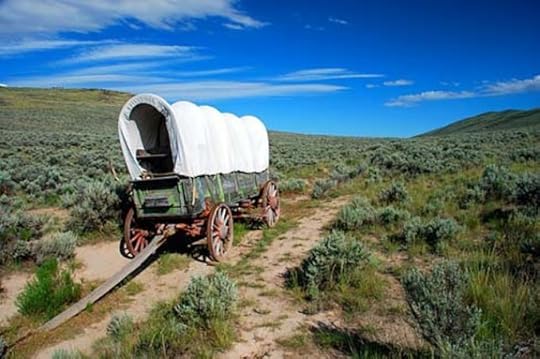
I hope everyone had a wonderful summer. I spent some time relaxing, but I also kept pretty busy.
In addition to working on The Duchess of Idaho, Book Five of the Loving Husband Series, I’ve put together a print and digital copy of Copperfield Review Quarterly, a literary journal for readers and writers of historical fiction. If you want to read some wonderful short historical fiction and history-based poetry, you can check it out here.
Diana Gabaldon of Outlander fame is one of my favorite authors, and she does a column on her blog called Daily Lines where she shares bits of her work in progress. Outlander fans like me were thrilled to find out that the ninth book in the Outlander series will be published this coming November.
After reading Diana’s blog, I thought I’d occasionally share bits of The Duchess of Idaho with all of you. Keep in mind that the bits have not gone through final edits so they’re still works in progress. I’m not even sure where exactly in the book this particular bit is going to go.
Fans of the Loving Husband Trilogy will recognize the style of the excerpt. Yes, it’s written in a similar style as the first three Loving Husband books. And for those of you who have been letting me know, yes, I know that The Duchess of Idaho is the name of a movie. That’s where I got the title from. In fact, the movie plays a role in the story. It will make sense when you read it. To say more than that would be spoilers!
Here’s the excerpt. Enjoy!
* * * * * *
The white-covered wagons wait impatiently in a haphazard line as everyone readies for the bugle blast to tell them it’s time to begin their day’s journey. The tin-like sound pierces the air and the oxen move forward, hauling their heavy loads step by step over the rough terrain. If we make 18 miles today it will be a good day. We’re moving forward, moving West, the place they’ll call home, they say.
The oxen become edgy as they press forward. It is as if they sense the strenuous way ahead. Sunburned men, sun-bonneted women, and children with sunny smiles shout to each other.
“See you at the camp!” they cry, ready for their day’s adventure, because right now that is all this is to them–an adventure.
There are so many wagons I can’t count them all, but I can see the determination in the travelers’ eyes. They are determined to keep going, some more than others, maybe, but they’re ready. Whatever waits for them on the other side of this continent, they want it, and they’ll risk everything to find it.
I see him again, the young man who keeps catching my attention. I notice how he’s a head taller than those around him and I watch in fascination as his mop of dark curls falls over his pale blue collar. He rolls his shirtsleeves to his elbows and snaps his gray suspenders before reaching for the nearest horse. The gray animal exhales, its muscular shoulders lowering as it relaxes under the young man’s easy hand, kind smile, and friendly eyes. Another man slaps the young man’s shoulder and another man nods at something the young man says, his smile bright in amused wryness at something the dark-haired young man said. The young man looks in my direction and for a moment I think he sees me. He steps one foot forward, squints, shakes his head, then turns away as though I’m invisible, or a ghost, or both. Why can no one see me? He walks toward the wagon, pokes his head through the open back, and speaks to someone inside.
Mothers call to their children, saying get alongside this wagon right this minute or you’ll get lost and we won’t ever see you again. Some children think this is not such a bad thing. Others see their mothers’ stern expressions and they do as they’re told. Hired hands double-check the livestock. Women count their children once more and squint into the distance, their eyes shaded against the sun by hands and bonnets, as if they can see the Pacific Ocean from here. The air is loud with voices, hundreds of them.
“Matthew!” a woman calls.
The dark-haired young man looks into the back of his wagon and says something I can’t hear. He nods when the woman responds. I have not net been close enough to see the color of Matthew’s eyes, but from the distance they look pale, the same light shade as his shirt, now see-through with sweat as he slows the speed of his prairie schooner after a barrage of complaints from the woman inside.
I’m compelled to walk alongside the wagon though I know no one. I feel thin, airy, a wisp of an idea. I am here and not here. Finally, a woman nods at me. It’s the first time anyone has acknowledged me.
“Well?” she says. “If you muddle along at that speed you’ll be left behind. You don’t want that, do you?” She gestures to the green expanse of the prairie. “What would a woman do out here all by her lonesome?”
I tempted to say no, I don’t want to go, I’m not even sure what I’m doing here. Then I realize that if I don’t go I’ll be here alone, without anyone, just as the woman said. I quicken my stride and now I’m keeping pace with the woman and the others in her company. I’m compelled to follow these strangers for a reason I cannot name. As we walk, I have the strangest sensation that I’m making the journey for the same reason they are.
Is there anything out West for me?



